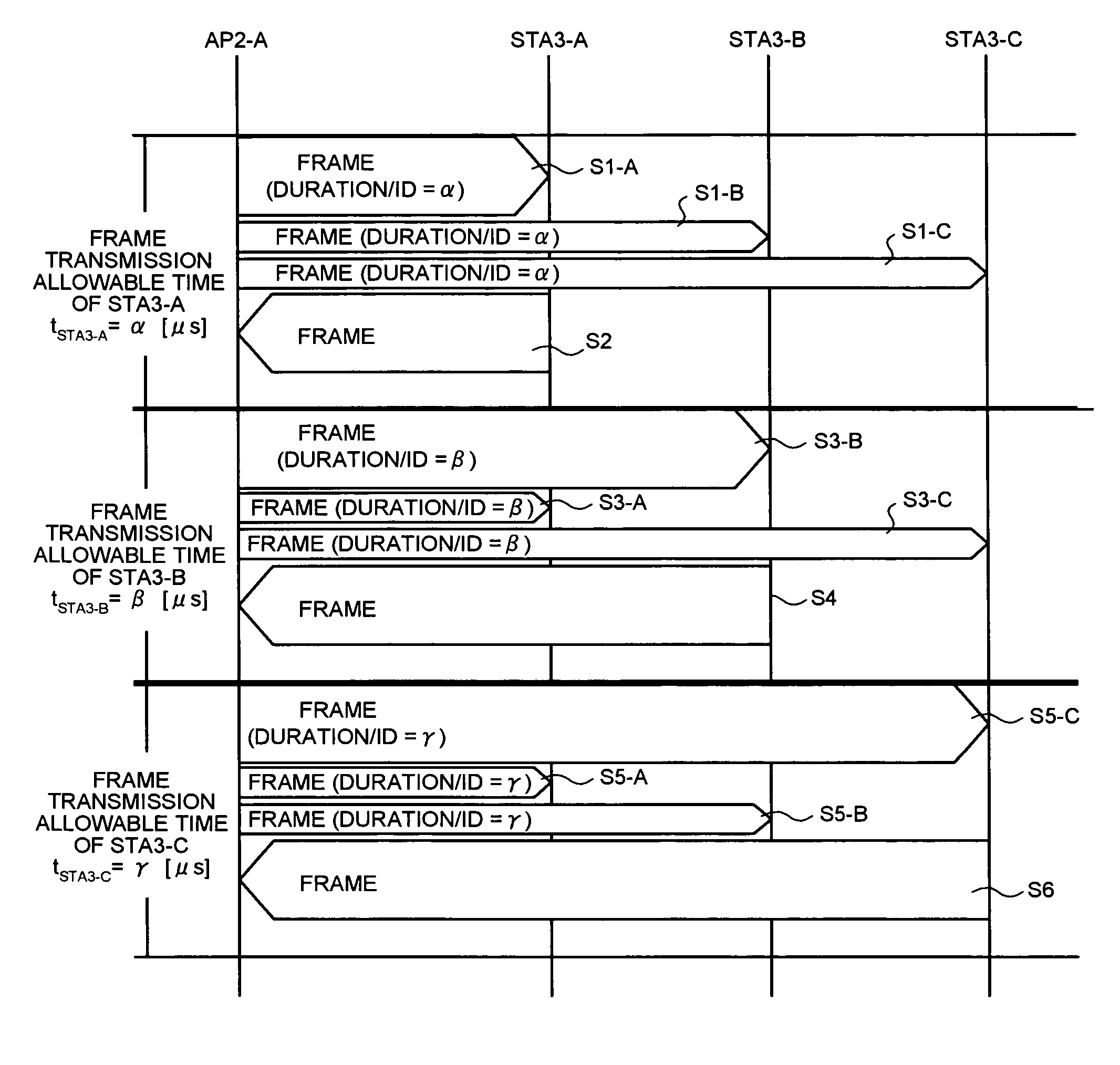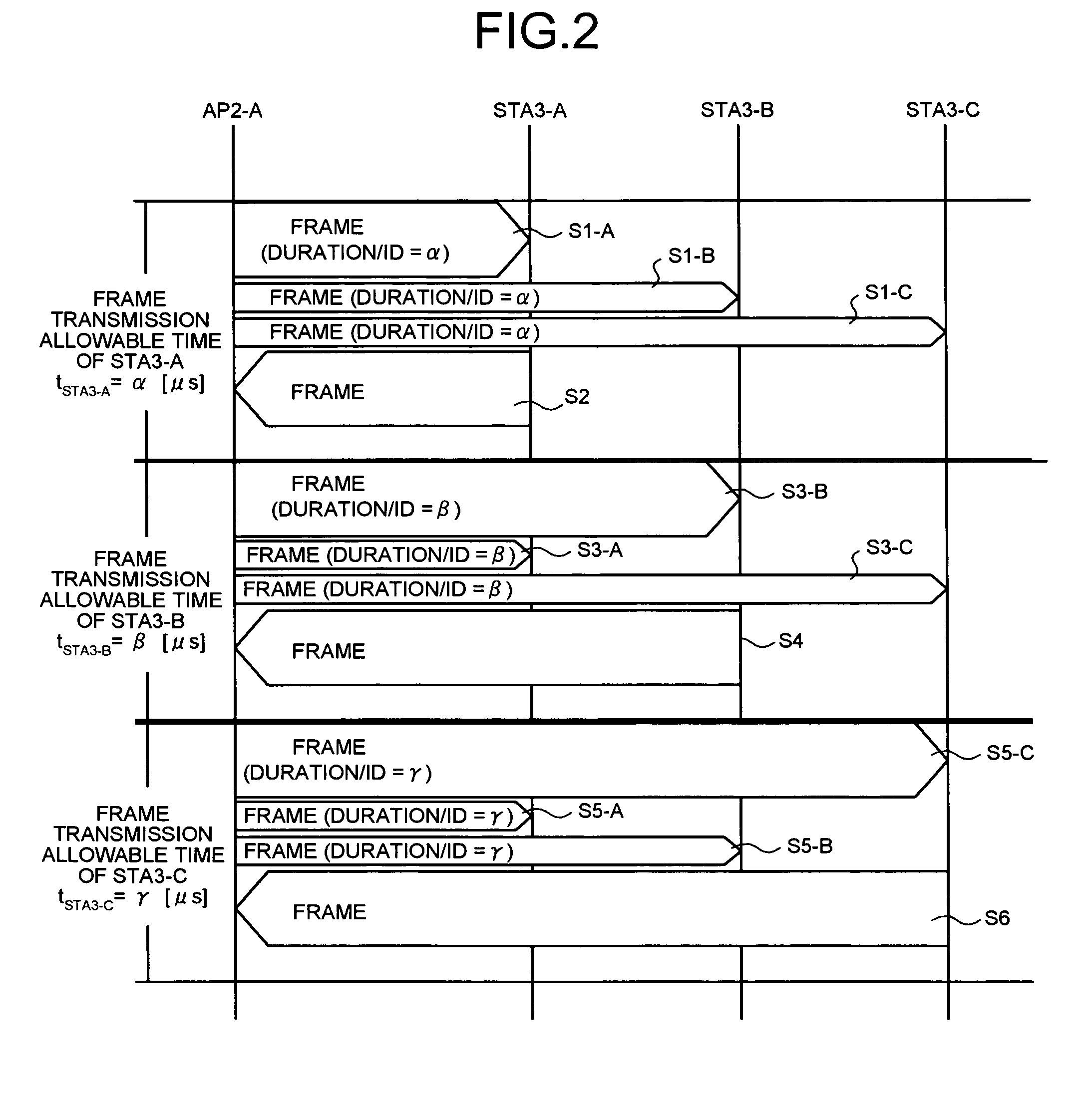Wireless base station and wireless communication system
a wireless communication system and wireless base station technology, applied in wireless communication, electrical equipment, selection arrangements, etc., can solve the problems of data frame collision, reduced throughput in the whole network, and not always installed in all wireless base stations and terminals, so as to prevent frame collisions between wireless terminal stations, prevent frame collisions and traffic control, and achieve high-reliability wireless communication. , the effect of high reliability
- Summary
- Abstract
- Description
- Claims
- Application Information
AI Technical Summary
Benefits of technology
Problems solved by technology
Method used
Image
Examples
first embodiment
[0033]FIG. 1 depicts the configuration of a wireless communication system according to a first embodiment of the present invention. As shown in FIG. 1, the wireless communication system according to the first embodiment is a wireless LAN system in conformity with the IEEE 802.11a, b, and g, including a wireless base-station control unit 1, wireless base stations (AP) 2-A, 2-B (hereinafter, also referred to as wireless base station (AP) 2), and wireless terminal stations (STA) 3-A, 3-B, 3-C, 3-D, and 3-E (hereinafter, also referred to as wireless terminal station (STA) 3). The wireless communication system adopts the Distributed Coordination Function (DCF) method and the Virtual Carrier Sense (VCS) control method.
[0034] In the wireless communication system, a beacon frame having predetermined information for synchronizing the wireless terminal station (STA) 3 with the wireless base station (AP) 2 is transmitted periodically. The wireless terminal station (STA) 3 having received the ...
second embodiment
[0078] In a second embodiment, an example in which the traffic volume between wireless terminal stations (STA) 3 is controlled in the configuration of the wireless communication system shown in FIG. 1 will be explained.
[0079] In the second embodiment, the transmission allowable time for the wireless terminal stations (STA) 3 in the first embodiment is set equal to all wireless terminal stations (STA) 3, that is, set isochronously. The transmission control frame in which the isochronous transmission allowable time is set is transmitted to all the wireless terminal stations (STA) 3.
[0080] After having received the transmission control frame transmitted from the wireless base station (AP) 2, only the wireless terminal station (STA) 3 specified as an object to which the transmission allowable time is applied in the transmission control frame can transmit a data frame to the wireless base station (AP) 2 during the transmission allowable time set in the transmission control frame. The i...
third embodiment
[0104] In a third embodiment, an example in which in the wireless communication system shown in FIG. 1, the transmission allowable time is set, taking into consideration a request from the wireless base station (STA), will be explained.
[0105] In the third embodiment, the respective wireless terminal stations (STA) 3 request desired transmission allowable time, at which allocation of the transmission allowable time to the own wireless terminal station (STA) 3 is desired at the time of transmitting the transmission control frame next time, to the wireless base station (AP) 2. In other words, each of the wireless terminal stations (STA) 3 sets the desired transmission allowable time at the time of transmitting the data frame and transmits the set desired transmission allowable time to the wireless base station (AP) 2. For example, when it is desired the wireless terminal station (STA) to transmit a data frame larger than the normal data frame during the next transmission allowable tim...
PUM
 Login to View More
Login to View More Abstract
Description
Claims
Application Information
 Login to View More
Login to View More - R&D
- Intellectual Property
- Life Sciences
- Materials
- Tech Scout
- Unparalleled Data Quality
- Higher Quality Content
- 60% Fewer Hallucinations
Browse by: Latest US Patents, China's latest patents, Technical Efficacy Thesaurus, Application Domain, Technology Topic, Popular Technical Reports.
© 2025 PatSnap. All rights reserved.Legal|Privacy policy|Modern Slavery Act Transparency Statement|Sitemap|About US| Contact US: help@patsnap.com



